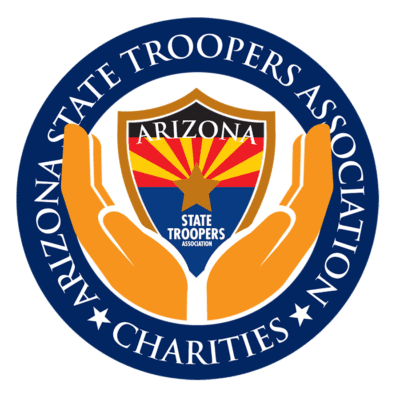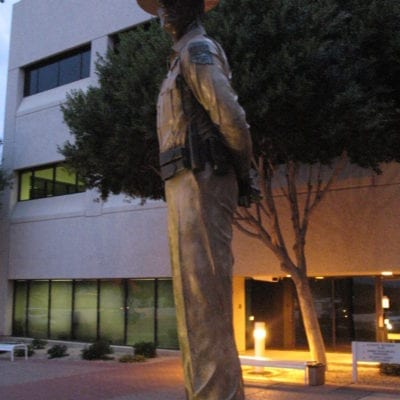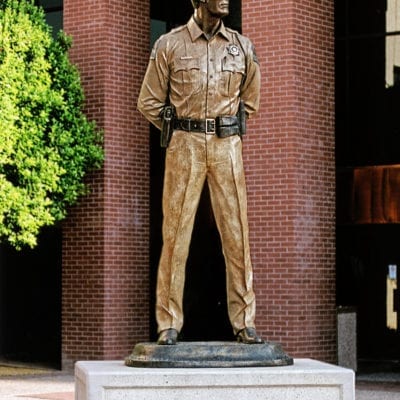Author: Lt. Dan Marcou
As a young officer, I witnessed an instructor unintentionally fire a .357 magnum round into the cement floor of a range, causing the bullet and the floor to fragment and injure five officers. This incident inspired me to become a trainer, dedicated to making certain my training would prevent, not cause, injuries.
Force-on-force survival training is valuable when realistic but can be fraught with danger if not done with a laser focus on safety. I would like to share 13 steps I followed to ensure my force on force training was as safe as possible.
1. Safety sweep
Sweep the training area to determine no dangerous conditions exist. Once complete, proper notifications should be made, and the area cordoned off with signs indicating training is in progress. These precautions prevent unaware individuals from wandering into the area once training begins, which could obviously lead to unpleasant outcomes.
2. Safety brief
Relay the concept that everyone involved in training is responsible for safety in the safety brief. Anyone who sees an unsafe condition should be authorized to stop the training by shouting “Red!” or “Stop!” Red is preferred, because stop could be construed to be to be a part of the scenario.
Explain safety rules to prevent injury, as well as protocols to follow if an injury occurs. Participants should identify pre-existing injuries, or conditions they have going into the training.
Close by asking, “Does everyone feel safe to continue?” If so, participants give a thumbs up.
3. Evolutionary brief
The trainer in charge conducts the evolutionary brief. The brief describes the general flow of the training and what is expected of the trainees. For example, at times you may limit the level of force used in the scenario because you are targeting the training of proper handcuffing and searching techniques. This would be impossible to accomplish when role players and trainees are in full-body protective gear.
4. Triple check
The triple check is the step not taken when tragedies have occurred. All trainers, role players and observers must be triple checked.
The safety officer should have each person:
- Check themselves to ensure they have no live weapons, or ammunition on their person. Be checked by a fellow student, or instructor. Be checked a third time by another instructor. This check should be thorough, but not so intrusive into intimate areas as to generate complaints. This is not a search incident to arrest.
No one can bring a live weapon into the scenario location; even high-ranking observers.
5. Role player prep
Every scenario should have a pre-determined objective and role players should be properly rehearsed. When role players deviate from the script, they not only compromise the objectives and continuity, but they also compromise safety.
6. Equipment check
Equipment checks should be done by a trainer thoroughly familiar with all the equipment involved. There is such a variety of training ammunition and protective equipment used for force-on-force training that it is imperative this inspection should be done by a pro. For example, there is a big difference in the safety equipment used by participants armed with airsoft guns as opposed to students armed in training where simunitions are in play.
Damaged safety equipment should be replaced.
Again, lethal weapons containing lethal ammunition can’t be allowed into in-progress force-on-force training.
7. Equipment issue
A trainer issues all equipment – including the helmet, throat and groin protection – that is to be used in force-on-force firearms training. When that equipment is in place the training firearm is issued and holstered. Magazines loaded with the desired training round are issued and placed in the pouch. The trainee is taken to a safe location to administratively load, charge and holster their training weapon on the trainer’s command. (It is also acceptable to have students load their own magazines under the supervision of the trainer, so that all are satisfied each round placed in the magazine is the training round selected to facilitate the training.)
8. First safety loop
A trainer checks the trainee to determine equipment is properly in place and that they are ready to proceed.
9. Second safety loop
The trainer asks the individual trainee if they have any injuries, or conditions going into the scenario. Additionally, they are asked, “Do you feel safe to continue?” If so they indicate with a thumbs up. The safety officer advises the officer in charge of the training the student is clear to begin.
10. Start exercise/scenario
The officer in charge will begin the scenario or exercise.
11. Stop exercise/scenario
The officer in charge will end the scenario when:
- Someone is about to be injured or has been injured; The objective has been achieved; The trainee has gone in an unacceptable direction or has begun a loop (verbalization or a tactic that is ineffective and repetitive).
12. Safety loop
Immediately after stopping a scenario the trainer should ask, “Are there any injuries?” A quick thumbs up indicates everyone involved is uninjured.
13. Debrief
During the debrief let the trainees self-debrief by asking them two questions:
Why did you do what you did? (They describe and justify their actions.) How do you see yourself the next time? (“When this happens on the street, I see myself…”)
By conducting debriefs in this way you are preparing trainees to write thorough reports, testify in court and when-then think on every call.
All weapons and ammunition are cleared and accounted for under the direct supervision of a designated trainer.
Conclusion
The professional trainer strives to walk the fine line between training that is as realistic as possible yet safe, all the while preparing officers for the harsh realities of the street.
Bibliography
Murray KR. Training at the Speed of Life: The Definitive Textbook for Police and Military Reality Based Training 1st Edition. Armiger Publications, 2006.





